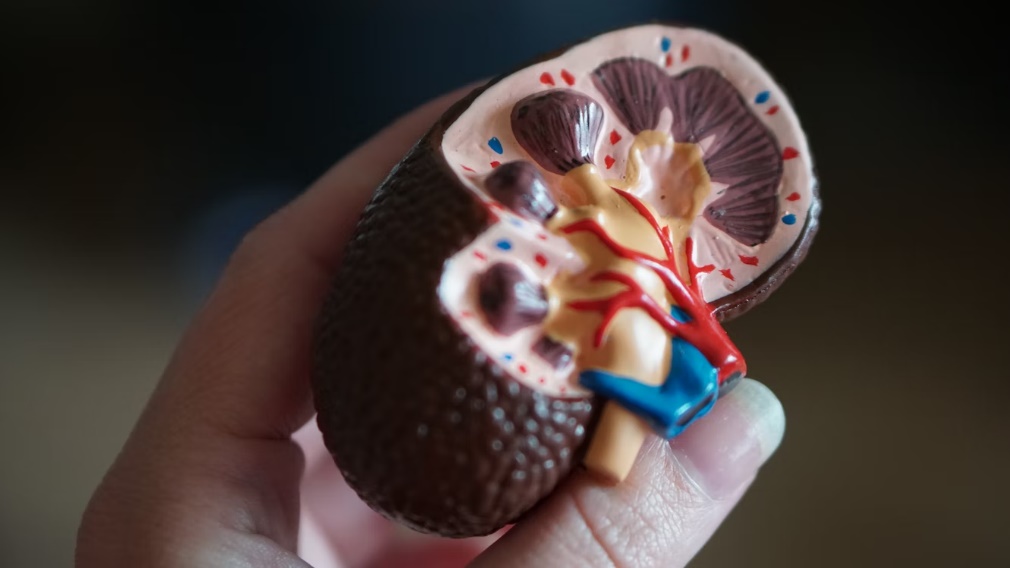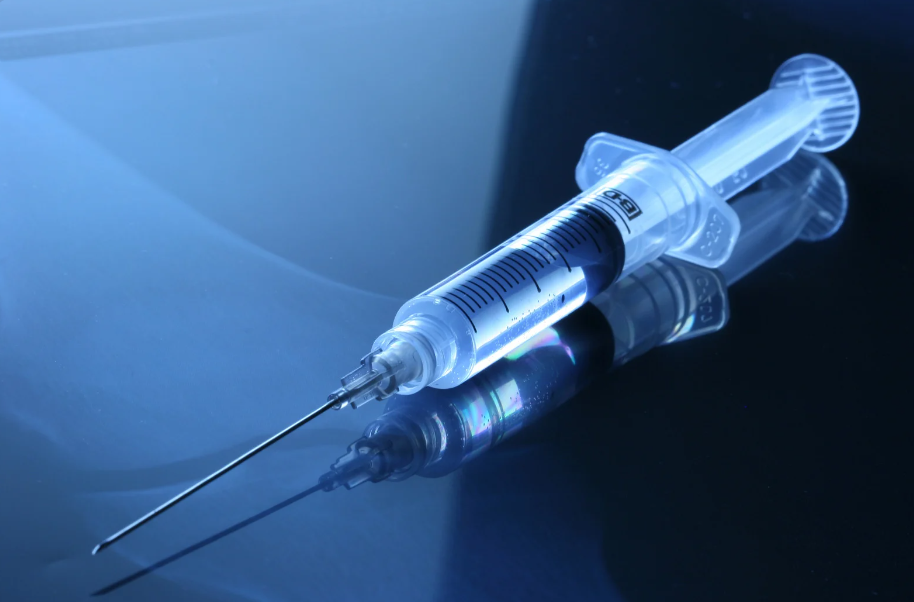A summary of this fantastic BJA education article:
https://www.clinicalkey.com.au/#!/content/playContent/1-s2.0-S2058534922000506

Epidemiology
-
- Most common causes of CKD are diabetes and hypertension
What is the definition of CKD?
-
- CKD definition: abnormality of kidney structure or function > 3 months (Renal Association)
- Electrolyte abnormalities, proteinuria (ACR > 3), haematuria of renal origin, histological/radiological abnormalities in structure, raised creatinine and/or cystatin C (over 2 occasions 90 days apart)
- Additional abnormalities include uraemia and anaemia
- CKD definition: abnormality of kidney structure or function > 3 months (Renal Association)
How is CKD classified?
-
- Classification is based on eGFR
- Stage 1: eGFR 90 or higher
- Stage 2: eGFR 60-89
- Stage 3a: eGFR 45-59
- Stage 3b: eGFR 30-44
- Stage 4: eGFR 14-29
- Stage 5: eGFR less than 15
- GFR not routinely measured because complex procedure requiring measurement of plasma or urinary clearance of exogenous marker (e.g., inulin) -> eGFR commonly used
- 2021 CKD-EPI equation recommended for calculation of eGFR over MDRD and Cockcroft-Gault
- Uses cystatin C clearance which is independent of muscle mass
- Classification is based on eGFR

What are manifestations of renal impairment in each body system?
-
- Metabolic changes
- Impaired ability to excrete water and sodium -> fluid overload -> general and pulmonary oedema
- Hyperkalaemia, metabolic acidosis (2 most common and clinically concerning), hyperphosphatemia, hypocalcaemia, hypermagnesemia, hyperuricaemia, hypalbuminaemia
- Bicarb supplements prescribed to treat metabolic acidosis
- Low potassium diet and avoiding drugs known to cause hyperkalaemia
- CVS
- Hypertension is both a cause and effect of CKD
- Increased risk of IHD
- Most patients do not progress to ESRD but die of CVS complications
- Increased circulating inflammatory mediators, hypercoagulability, arterial calcification, endothelial dysfunction
- Chronic volume (water and sodium retention, presence of AV fistula or chronic anaemia)/pressure overload (from hypertension and atherosclerosis)-> LVH -> diastolic dysfunction + arrythmias
- Atherosclerosis accelerated in CKD: postulated mechanism of impaired endothelial function, low-grade inflammation, and dyslipidaemia
- Patients undergoing RRT may exhibit calciphylaxis (accumulation of calcium in small blood vessels)
- Predisposed to pulmonary oedema
- Severe uraemia -> pericarditis
- Resp
- Fluid overload -> pulmonary oedema + pleural effusions -> decreased compliancy -> reduced functional residual capacity and increased V/Q mismatch
- Restrictive pulmonary dysfunction also common with CKD but unknown pathophysiology
- Haematology
- Decreased erythropoietin synthesis -> anaemia
- Iron supplementation and IV erythropoiesis-stimulating agents (erythropoietin or darbepoetin alfa)
- Uraemic platelet dysfunction, thrombasthenia -> hypo-coagulable
- Prothrombotic state: decreased fibrinolysis, increased initial fibrin formation, increased fibrin-platelet interaction and increased qualitative platelet function. Increased risk of VTE with decreasing eGFR
- Gastrointestinal
- Anorexia, N/V, diarrhoea from CKD -> dehydration & impaired wound healing postoperatively
- Delayed gastric emptying from autonomic neuropathy
- Metabolic changes

-
- CNS
- Myoclonus, asterixis, chorea, uraemic encephalopathy, seizures
- Incidence of seizures in CKD = 10%
- Creatinine metabolites inhibit GABA and stimulate NMDA. Electrolyte imbalance also plays a role
- Dialysis disequilibrium syndrome: rare transient encephalopathy usually due to rapid or omitted dialysis sessions
- Penicillins, cephalosporins, carbapenems and quinolones -> cortical irritability -> seizures
- Uraemia, T2DM, hyperparathyroidism -> decreased baroreceptor sensitivity, SNS overactivity and PSNS dysfunction -> autonomic neuropathy -> difficulties controlling BP and predisposition to perioperative arrythmias
- Endocrine
- Reduced synthesis of calcitriol (active vitamin D) -> impaired calcium absorption from GIT and kidneys
- Increased serum phosphate also contributes to hypocalcaemia -> hyperparathyroidism -> parathyroid hyperplasia -> bone demineralisation and increased fracture risk
- Vitamin D analogues and calcimimetics suppress PTH
- CNS
Management of CKD
-
- Principles
- Treating reversible causes
- Preventing progression
- Manage complications
- Identify patients requiring RRT
- Prevention of AKI and subsequent progression to CKD
- Anaesthetist has role in preventing AKI in perioperative period
- Renal hypoperfusion may occur due to hypovolaemia, hypotension or infection
- Consider ceasing nephrotoxic drugs: aminoglycosides, NSAIDs, radiographic contrast
- Relief of urinary tract obstruction
- Slowing progression
- Optimal bp control and control of proteinuria through ACE inhibitors/ARBs
- Diet: recommended daily energy intake is 30-40kcal/kg ideal body weight per day with adjustments needed to consider age and physical activity
- Minimum protein intake for CKD 4-5 not on dialysis is 0.8g/kg IBW/day
- Sodium restriction to <2.4g/day
- Patients with hyperkalaemia, hyperphosphatemia may need dietary K+ and PO4- restriction
- Dietitian involvement
- Principles
Renal replacement therapy
-
- Options for ESRF include conservative mx focused on symptom control, RRT and renal transplantation
- RRT: HD, PD or kidney transplantation
- PD
- Dialysate infused in peritoneal cavity
- Contains sodium chloride, lactate or bicarbonate and high concentration of glucose ensuring hyperosmolarity
- Proteins and electrolytes exchanged over membrane driven by osmosis
- Allows pts to be treated at home and obviates need for invasive vascular access
- Complications: peritonitis, hyperglycaemia, weight gain, hernias, back pain
- Rare complication: Encapsulating peritoneal sclerosis -> bowel obstruction
- Haemodialysis
- Dialysate pumped in counter-current direction to blood flow
- Solutes equilibrate after diffusion
- Complications: vascular access complications, hypotension, arrhythmias, disequilibrium syndrome
- Kidney transplantation
- Cadaveric or living donor
- Best outcomes
- During induction of renal transplantation, patients require Abs directed against T cells
- Transplant recipients require long-term maintenance immunosuppression
- Vascular access
- Temporary: short-term lines, tunnelled and cuffed lines and subcutaneous port catheter systems. 1 week only due to risk of infection. Most common is right internal jugular vein (ease of access, lower risk of stenosis than left and subclavian routes and lower risk of infection than femoral)
- Permanent: native AV fistula (best choice), arteriovenous grafts or long-term catheters
- Infection, stenosis, thrombosis and aneurysm are complications related to HD vascular access
Pharmacology
-
- Pharmacokinetics
- Absorption
- Gastroparesis -> delayed gastric emptying
- Fluid overload -> small bowel oedema
- Both contribute to delayed absorption
- Gastric urease converts urea to ammonia -> increased gastric pH -> drug ionisation and subsequently drug bioavailability altered
- Distribution
- VD is influenced by total body water, protein binding and tissue binding
- Decreased protein binding of acidic drugs due to:
- Hypoalbuminemia
- Conformational changes in protein binding sites
- Competition for binding sites with organic acids
- Increased protein binding of basic drugs due to:
- Increased plasma concentration of alpha1-acid glycoprotein
- Increased VD for hydrophilic drugs due to fluid retention
- Metabolism
- In CKD, CYP3A4 and CYP2C9 are inhibited whereas CYP2E1 is induced
- Excretion
- Renally excreted drugs may accumulate
- Interestingly, non-renal clearance of many drugs is also reduced
- Creatinine clearance often used to aid dosage modifications
- Absorption
- Pharmacokinetics
CKD and anaesthesia
-
- Preoperative considerations
- When conducting a history and exam, what is pertinent for CKD patients?
- Aetiology of CKD
- Severity of renal impairment (clinical and biochemical)
- Fluid status, dry weight, ability to produce urine
- Renal replacement therapy: modality, last session, amount of fluid removed
- Drug history, including immunosuppressant and long-term steroid therapy (may require perioperative steroid replacement)
- Presence of AV fistula
- Volume status: capillary refill time, skin turgor and auscultatory findings
- When conducting a history and exam, what is pertinent for CKD patients?
- Preoperative considerations

-
-
- What clinical investigations would you consider?
- FBC (anaemia), UEC (severity of CKD), coagulation studies (do not preclude coagulopathy)
- ECG (screen for LVH, ischaemia and arrhythmias), echocardiogram (if suspicion of cardiac impairment of pericardial effusion)
- CXR (if clinical evidence of overload)
- What preoperative management would you consider?
- Continuing disease-specific treatment throughout perioperative period if safe and practicable
- No current consensus regarding whether preoperative ACE inhibitor therapy is beneficial or harmful
- If patient requires dialysis before surgery, liaise with patient’s specialist team
- What clinical investigations would you consider?
- Conduct of anaesthesia
- What else should I consider in addition to the minimum monitoring standards by the Association of Anaesthetists?
- Invasive arterial pressure monitoring (arterial line) for patients with poor BP control or undergoing prolonged major surgery
- Central venous access if peripheral venous access is poor to facilitate use of potent vasoactive drugs and aid in assessment of fluid status
- Preserve current arteriovenous fistulae and protect potential fistula sites (avoid forearm veins)
- AV fistulae should be carefully wrapped in cotton wool and non-invasive BP cuff placed on opposite arm
- Urine output monitoring
- What may be necessary if your patient has gastroparesis?
- RSI may be necessary
- Modified approach: rocuronium and sugammadex reversal if required
- RSI may be necessary
- Drugs with shorter half-lives and drugs not reliant on renal elimination should be used
- Inhalational agents
- Production of inorganic fluoride from metabolism of volatile anaesthetics, particularly methoxyflurane by hepatic cytochrome P450 system -> vasopressin-resistant high-output renal insufficiency
- Neither peak value of fluoride nor duration of exposure correlate with anaesthetic nephrotoxicity
- Sevoflurane encounters soda lime absorbers -> dehydrofluorination -> haloalkenes formed (compound A)
- Compound A is severely nephrotoxic in rats
- Insufficient concentration in clinical practice to induce nephrotoxicity -> sevoflurane safe in CKD
- Desflurane and isoflurane are metabolised to a minimal extent -> no concerns in CKD
- What else should I consider in addition to the minimum monitoring standards by the Association of Anaesthetists?
-

-
-
- Neuromuscular blocking agents
- Atracurium is NMBA of choice in CKD
- Undergoes ester hydrolysis and Hofmann degradation – both independent of renal function
- Cisatracurium also permitted in CKD
- Predominantly Hofmann degradation
- Clearance reduced by 13% in CKD -> elimination half-life increased by 4.2min
- Up to 30% of vecuronium is excreted renally
- Up to a third of rocuronium is excreted renally in 24h period
- Pancuronium should be avoided in CKD
- Suxamethonium should be avoided due to risk of exacerbating pre-existing hyperkalaemia
- Sugammadex can successfully reverse blockage from aminosteroid NMBAs in patients with severe renal impairment
- Rocuronium-sugammadex complex:
- Can persist in vivo for up to 7 days
- Very stable
- Can be cleared by high-flow dialysis
- Rocuronium-sugammadex complex:
- Atracurium is NMBA of choice in CKD
- Neuromuscular blocking agents
-

-
-
- Opioid analgesics
- Antidiuretic effect -> urinary retention
- Morphine-6-glucuronide is metabolite responsible for potent analgesic, sedative and resp depressant effects of morphine
- Elimination dependent on renal function (half-life prolonged from 2 to 27h in CKD)
- Fentanyl: approximately 7% is excreted unchanged in urine
- Alfentanil: in CKD, less protein binding -> more free drug to exert effect
- Remifentanil: not dependent on renal function
- Oxycodone and metabolites: accumulate in CKD with prolongation in elimination half-life of 2.3-3.9h
- Tramadol: 30% excreted unchanged in urine, may be epileptogenic in uraemia (lowered seizure threshold)
- NSAIDs
- Should be avoided in CKD
- Reduced renal blood flow and GFR
- Can also cause interstitial nephritis
- Increases risk of major vascular events and bleeding in CKD patients with coagulopathy (uraemia and platelet dysfunction)
- Can contribute to hyperkalaemia
- Regional anaesthesia
- Can be used as primary anaesthetic technique, depending on type of surgery
- Central neuraxial blockage -> promptly address hypotension to prevent worsening of renal perfusion
- Maintain BP with vasoconstrictions
- Prevent fluid overloading by judiciously carrying out fluid preloading
- Bear in mind coagulation abnormalities
- Other important points of consideration
- Essential to maintain normovolaemia irrespective of technique and drugs used
- Careful fluid balance extends postoperatively – patients may require dialysis
- CKD patients may take longer to emerge from anaesthesia with prolonged residual drowsiness -> require extended supplemental oxygen and continuous O2 sats monitoring
- Opioid analgesics
-
By Dr Luke Chan